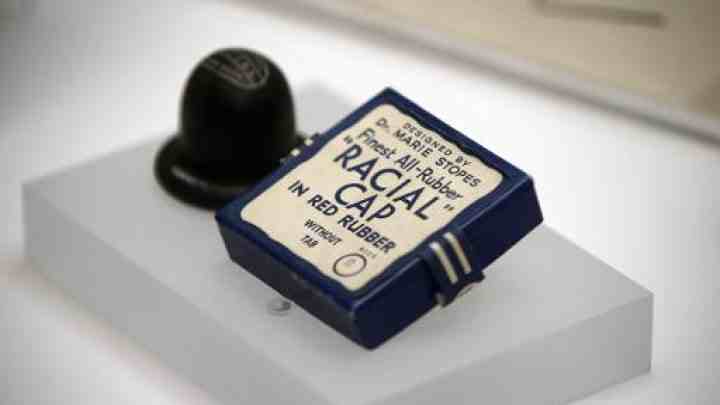
Scientific discovery mingles with stimulation in Britain's first exhibition about the study of sex, with pioneering sex aids, ancient phallic charms and even a chair credited with inducing orgasms.
Historic attitudes towards sex are explored through Roman amulets, graphic drawings of contorting Japanese couples and early pornography featuring a surprise appearance from cartoon favourite Popeye.
"Each generation likes to think that it has invented sex," Honor Beddard, the curator of the show at London's Wellcome Trust, told AFP.
"But a short walk around this exhibition will challenge the idea that we are any more experimental or enlightened than our forebears, in fact we may have a very lot to learn from them," she said.
The show, which opens on Thursday and runs until September 2015, explores attempts to understand human sexual behaviour through primitive art, literature, psychoanalysis and hard science.
"The Institute of Sexology — Undress Your Mind" exhibition is named in honour of Magnus Hirschfeld's research centre of the same name, whose immense archive of sexual research flourished in Berlin during the Weimar Republic.
The German scientist is widely credited with altering Western notions of sexuality, particularly homosexuality, and became a target of the increasingly powerful Nazi Party as a result.
"The struggles that the sexologists had were so extreme that you can't help be serious about it," Beddard said.
Much of the exhibition pays tribute to the obsessive collectors, such as Hirschfeld, whose vast troves enabled sexual behaviour to be studied.
'Evolving story'
It also explores the permissive attitudes to sex of "primitive" societies through the work of Bronislaw Malinowski in Samoa, and contrasts them with the restrained Western sexual values of the time.
These are strikingly demonstrated by what at first glance appears to be a piece of heavy armour, but is in actual fact a device to prevent male masturbation.
"The history of sexual progress is not one slow march into enlightenment," said Beddard.
"There are points at which we appear quite liberated and others we remain much more repressed, so it's very much an evolving story."
The exhibit's most intriguing artefact, the "orgone accumulator", highlights loosening attitudes towards sex during the 20th century.
Visitors can sit inside a recreation of the wooden box created by psychoanalyst Wilhelm Reich to induce sexual gratification, which provided the inspiration for the "orgasmatron" in Woody Allen's 1973 film Sleeper.
In the "consulting room", a copy of a letter written to a worried parent by Sigmund Freud explaining that homosexuality is "nothing to be ashamed of and cannot be considered as a disease" sits on a desk strewn with items from the great psychoanalyst's collection.
The latter part of the exhibition looks at more recent laboratory experiments, displaying items with distinctly unsexy names such as the penile strain gauge and the vaginal photoplethysmograph — both instruments for measuring arousal levels.
Among the scientists celebrated is Marie Stopes, the author of the groundbreaking "Married Love" in 1918, in the field of birth control and women's sexual rights.
It also looks at the work in the United States of Alfred Kinsey, famous for his maxim: "The only unnatural sex act is that which you cannot perform".
